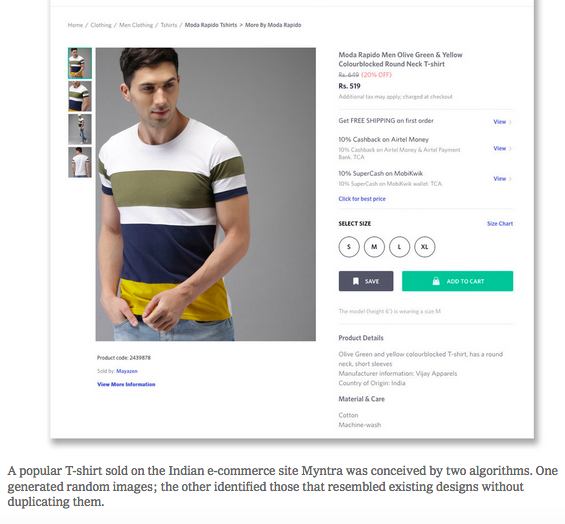. . .
That’s the case at Stitch Fix, an online styling service that sends customers boxes of clothing whose contents they can keep or return, and maintains detailed profiles of customers to personalize their shipments.
Stitch Fix relies heavily on algorithms to guide its buying decisions — in fact, its business probably could not exist without them. Those algorithms project how many clients will be in a given situation, or “state,” several months into the future (like expanding their wardrobe after, say, starting a new job), and what volume of clothes people tend to buy in each situation. The algorithms also know which styles people with different profiles tend to favor — say, a petite nurse with children who lives in Texas.
Myntra, the Indian online retailer, arms its buyers with algorithms that calculate the probability that an item will sell well based on how clothes with similar attributes — sleeves, colors, fabric — have sold in the past. (The buyers are free to ignore the projection.)
All of this has clouded the future of buyers and merchandise planners, high-status workers whose annual earnings can exceed $100,000.




